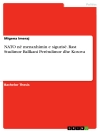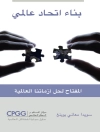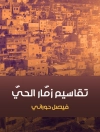A singular development in the post-Cold War era is the use of military force to protect human beings. From Rwanda to Kosovo, Sierra Leone to East Timor, and Libya to Cote d Ivoire, soldiers have rescued civilians in some of the world’s most notorious war zones. But what about Syria? Why have we observed the Syrian slaughter and done nothing? Is humanitarian intervention in crisis? Is the so-called responsibility to protect dead or alive?
In this fully revised and expanded third edition of his highly accessible and popular text, Thomas Weiss explores these compelling questions. Drawing on a wide range of case studies and providing a persuasive overview of the theory and practice of humanitarian intervention in the modern world, he examines its political, ethical, legal, strategic, economic, and operational dimensions to highlight key debates and controversies. Neither celebratory nor complacent, his analysis is an engaging exploration of the current quandaries and future challenges for robust international humanitarian action in the twenty-first century.
表中的内容
* About the Author
* Foreword to the Second Edition by Gareth Evans
* Preface and Acknowledgments
* List of Abbreviations
* Introduction
* 1 Conceptual Building Blocks
* 2 ‘Humanitarian’ Interventions: Thumbnail Sketches
* 3 New Wars and New Humanitarianisms
* 4 New Thinking: The Responsibility to Protect
* 5 So What? Moving from Rhetoric to Reality
* Notes
* Selected Readings
* Index
关于作者
THOMAS G. WEISS is Presidential Professor of Political Science at The CUNY
Graduate Center and Director of the Ralph Bunche Institute for International
Studies. He has published over forty books including Global Governance and
the UN: An Unfinished Journey and UN Ideas that Changed the World.












